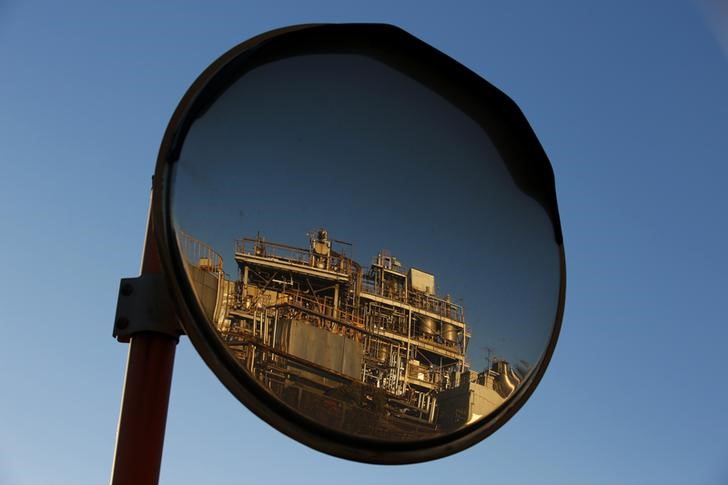(Bloomberg) -- Saudi Arabia and other Gulf suppliers may have agreed to cut oil production again starting next month, but by all indications the taps are set to remain wide open until then -- swelling crude stockpiles for at least a few more weeks.
The kingdom’s crude exports so far in April stand at 9.3 million barrels a day, according to tanker-tracking data compiled by Bloomberg. That compares with 6.8 million barrels a day through the first two weeks of March. What’s more, there are at least 10 supertankers with the capacity to haul a combined 20 million barrels of oil waiting to load at the Saudi port of Ras Tanura in the coming days.
State-owned oil company Saudi Aramco (SE:2222) pledged to boost output to 12.3 million barrels a day in April as it slashed prices in a battle for market share, following the collapse of the three-year old OPEC+ pact in March. As the coronavirus spread across the globe, governments imposed restrictions on movement and demand collapsed further, as did prices.
Following marathon international talks this past weekend, there’s now a new global deal to limit output, with Saudi Arabia agreeing to trim production to 8.5 million barrels a day in May and June. There’s been no indication that any producer will close the taps before May, meaning millions of barrels a day of crude entering the market that aren’t needed.
“The arrangement is from May,” Prince Abdulaziz bin Salman, the Saudi oil minister, told reporters on a conference call on Monday in reference to the OPEC+ agreement. “All of April was sold.”
In other words, the price war is still on for now. So far, the market hasn’t been impressed. Global benchmark Brent crude was down 5.4% at around $30 a barrel, by 5:50 p.m. in London on Tuesday. On Monday, the first day following the new agreement, futures rose by a meager 0.8%.
Deep Discounts
Another measure -- the official selling prices that traders pay for actual barrels of crude in the physical market -- indicates that Saudi Arabia is still looking to gain market share. The so-called OSPs for April were already at their lowest in at least three decades. The kingdom released May’s prices yesterday, deepening the discounts to most markets, especially Asia, where the cut was greater than expected.
Traders are awaiting similar figures from other Gulf producers like the United Arab Emirates and Kuwait, which generally follow the Saudi lead on pricing and production. They also have little incentive to cut output sooner than required.
U.A.E. Energy Minister Suhail Al Mazrouei said on his Twitter account after the meeting that the country “is committed to reducing production from its current production level of 4.1m” barrels a day. That’s at least 1 million barrels a day higher than it pumped in March, according to Bloomberg estimates.
All of that oil has to go somewhere, and with demand decimated, there’s only one obvious destination -- storage. With cargo nominations already set for this month, Saudi Arabia isn’t likely to reduce shipments to its customers. But it could trim volumes it’s sending to storage tanks in Egypt, Rotterdam and Japan. Without any reduction in those flows, though, stockpiles will continue to build through the remainder of April.
©2020 Bloomberg L.P.
